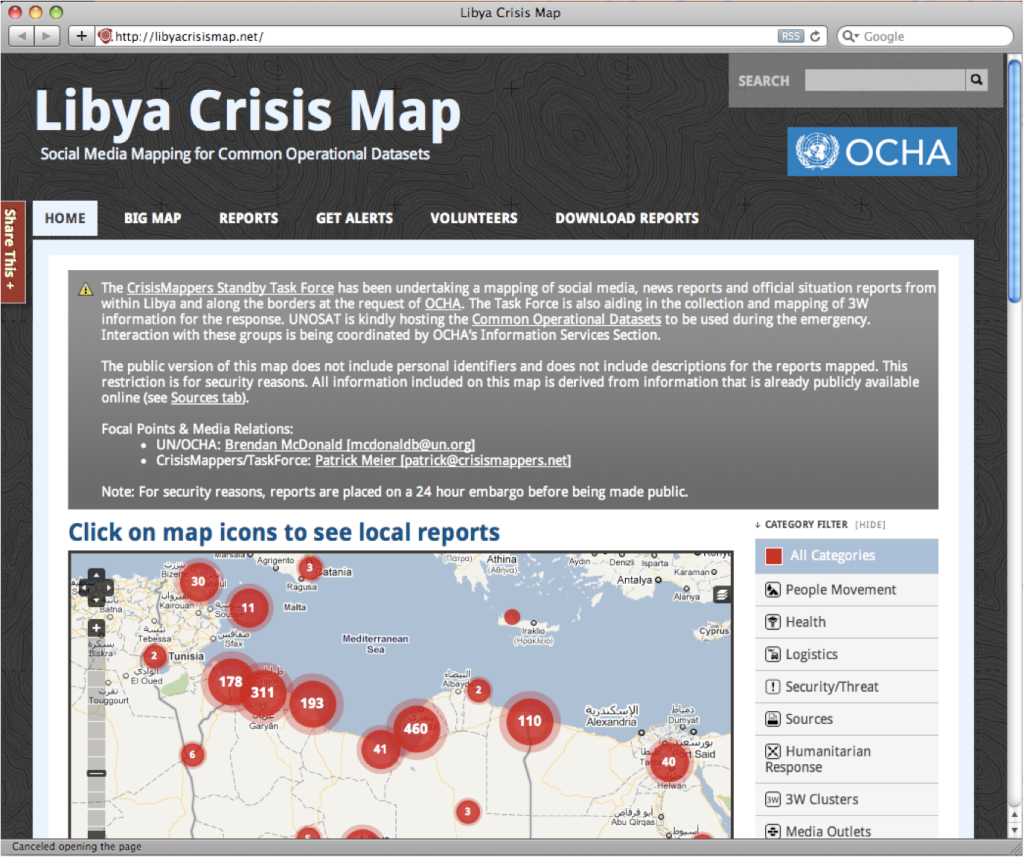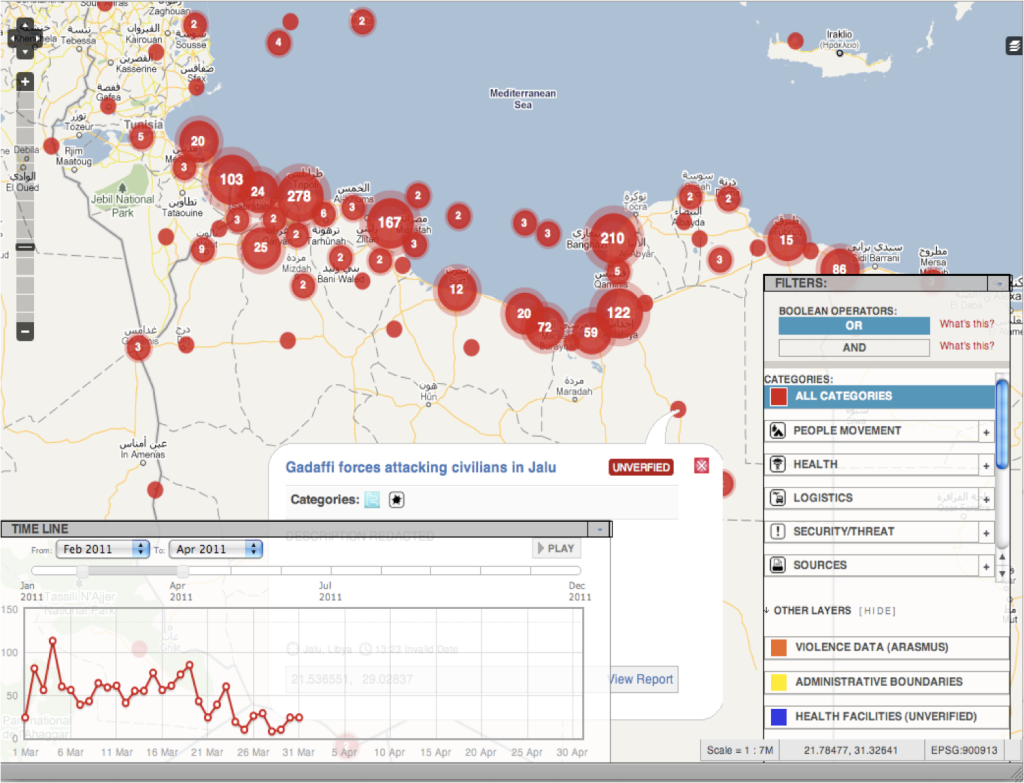Libya Crisis Map Deployment 2011 Report
We have just completed the after action review of the SBTF deployment of the Libya Crisis Map. You can view the report here. The entire point of this report is to catalyze conversation and learning. This is a live document since our space is defined by change and continuous learning, so the best we can do is share our own analysis in the form of an open document and invite the community to “finish” the report with their comments. To be sure, the real work happens in the comments, discussions and actions that ensue. Feel free to send any comments to us at [email protected]
This after action review is primarily based on the feedback from SBTF volunteers and official responders (see in particular the extensive feedback already posted as comments). The report helps to improve SBTF internal protocols including those on liaising with a variety of partners. Furthermore, this report contributes directly to the on-going development of a working interface between humanitarian organizations and V&TCs. Obviously, the SBTF model is not the only possible model and it focuses specifically on live mapping.
The UN OCHA team has also prepared a lessons learned document summarizing important lessons from Libya (and Japan) crisis map deployments. This report was based on a full day meeting in New York that took place on June 15, 2011. The meeting was organized by OCHA and included a number of partners from the Volunteer and Technical Community (V&TC) including the SBTF. This OCHA report, available here, provides important findings and recommendations that complement those of this SBTF review.

There is a wide range of opinions on the usefulness of the Libya Crisis Map. During the June 15 meeting in New York, OCHA staff who were most directly engaged in the initiative reaffirmed the value of the live map. They also recognized the need to provide more timely feedback on how these maps are used in future deployments. Others at the UN who were less directly involved in the project have argued that the “use case” for live maps has yet to be demonstrated. Some have highlighted that the speed and willingness of volunteers to collect and organize information as requested by OCHA (in particular for the 3Ws) was a great support at the start of the crisis before regular information management protocols within OCHA were activated.
OCHA’s own Brendan McDonald—the head of the Information Services Section who activated the SBTF for Libya—had this to say in a formal thank you note sent to all volunteers:

In an August 2011 interview with UNV.org, Brendan added the following:
“If you go back a couple of years, all of this information probably would have been available, but it would have been seen as noise coming at you in multiple formats”, he says. “Libya Crisis Map has done an extraordinary job to aggregate all of this information.”
Whatever other views are out there, we hope this review will encourage constructive discussion on the future of partnerships between VTCs and traditional responders. This is why we very much welcome your views on this report, so feel free to add comments to this blog post.

The review was prepared by the SBTF team and therefore should not be considered as an independent or exhaustive evaluation. The report was also written on a purely voluntary basis and thus was not funded in any way.
The SBTF would not exist without the dedicated and talented volunteers who have joined the team. Sincere thanks go to all SBTF volunteers who contributed to the Libya Crisis Map project. We would also like to thank Crisis Commons, the Humanitarian OpenStreetMap Team, Humanity Road, NetHope, the UN OCHA teams in Colombia and Geneva, and UN Global Pulse for their support. Finally, we should note that this project would never have taken off had OCHA not taken the bold decision to engage the SBTF in the first place.

Hey terrific website! Does running a blog such as this take a lot of work?
I’ve absolutely no expertise in programming however I had been hoping to start my own blog in the near future. Anyways, if you have any suggestions or techniques for new blog owners please share. I know this is off topic nevertheless I just wanted to ask. Many thanks!